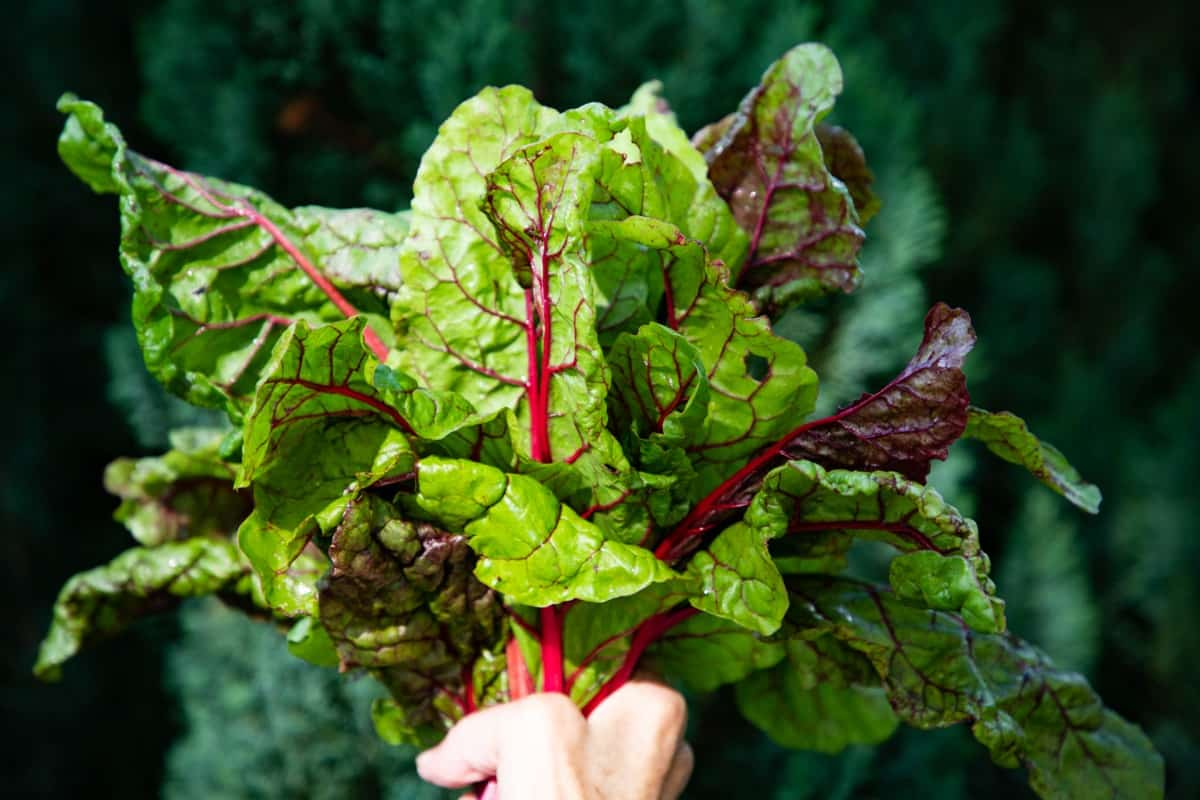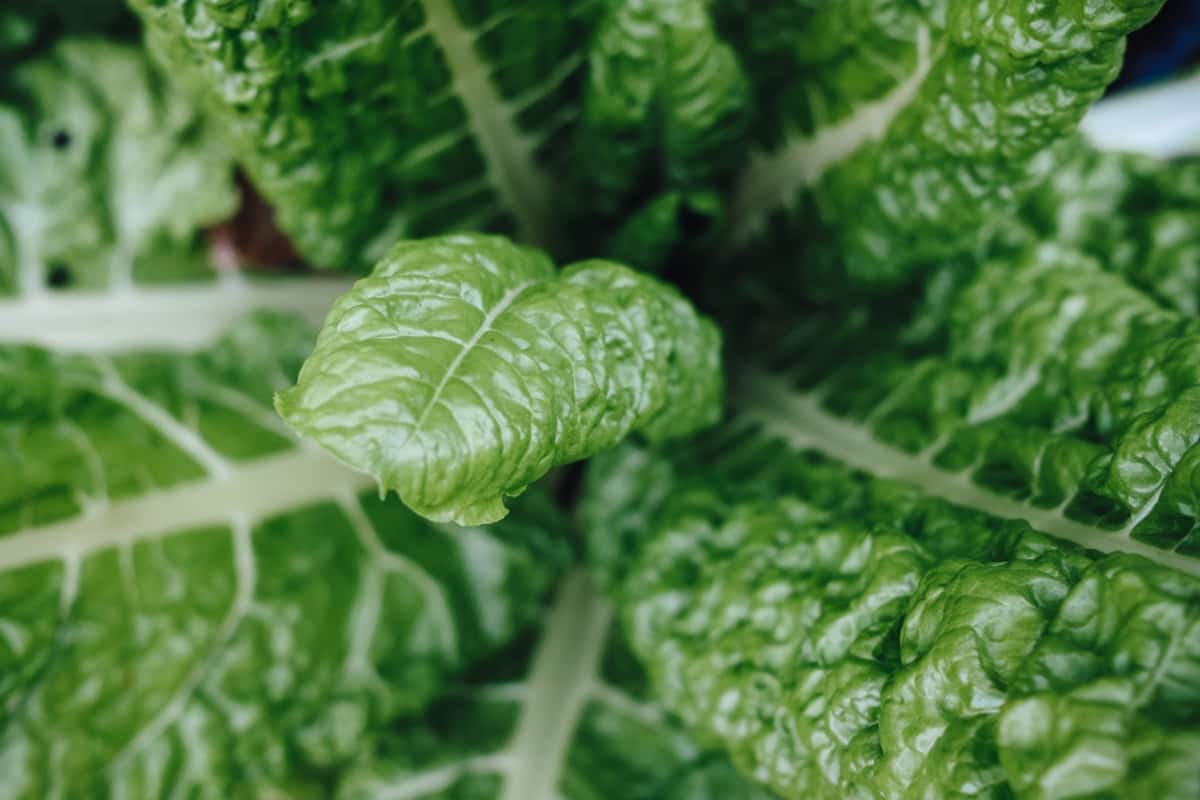Swiss chard, silverbeet, or perpetual spinach, is a nutritious leafy green vegetable from the beet family. It is a popular choice for home gardeners due to its versatility and ease of growing. However, like any plant, Swiss chard is susceptible to various problems hindering its growth and productivity. This article will discuss common problems with Swiss chard plants and provide effective treatments and solutions.

9 Common Problems With Swiss Chard Plants
Preventing Swiss Chard Pest Infestations: Natural Control Methods
Protecting Swiss Chard from Bugs
- Bugs can cause significant damage to Swiss chard plants, resulting in reduced productivity. To keep bugs at bay,
- Implement a crop rotation strategy by avoiding planting Swiss chard in the same location year after year. This practice helps disrupt pest life cycles and reduce the risk of infestations.
- Utilize companion planting techniques to repel bugs naturally. Planting aromatic herbs such as basil, mint, or cilantro around Swiss chard can deter pests.
Black Aphids On Swiss Chard and Their Control
- Aphids are common pests that can cause significant damage to Swiss chard plants. To combat aphid infestations,
- Encourage the presence of natural aphid predators such as ladybugs, lacewings, and hoverflies in your garden.
- Create a homemade aphid spray by mixing a few drops of dish soap with water. Spray this onto the affected Swiss chard leaves to get rid of aphids on the Swiss Chard.
- Neem Oil is an organic insecticide that can effectively control aphids. Dilute neem oil according to the instructions on the product label and spray it on the Swiss chard leaves.
Dealing With Yellowing Leaves on Swiss Chard Plants: Causes and Solutions
- Aphids: These tiny insects can cause yellowing leaves by sucking the sap from the plants. Use insecticidal soap or else neem oil to control aphid populations.
- Leaf miners: The larvae of leaf miner flies can tunnel through the leaves, causing yellowing and brown patches. Remove and destroy affected leaves to prevent further damage.
- Slugs and snails: These pests feed on Swiss chard leaves, leaving irregular holes and yellowing behind. Handpick them or use organic slug and snail control methods to manage their presence.
- Swiss Chard leaf spot: Leaf spots are caused by various factors, including fungal or bacterial infections, nutrient deficiencies, or environmental stress. They appear as small, discolored leaf lesions, which may gradually enlarge and turn yellow. Remove and destroy any infected leaves or plant debris to prevent the spread of disease. To treat cercospora leaf spot on Swiss chard, neem oil, copper-based fungicides, or sulfur-based fungicides can help to manage the disease.
Controlling Fungal Diseases in Swiss Chard Plants
Swiss Chard Bacterial Soft Rot: Bacterial soft rot is a common disease that affects Swiss chard plants, causing the tissues to become slimy and discolored. To control bacterial soft rot, ensure proper drainage to prevent waterlogging, as excess moisture can contribute to the development of bacteria.
Powdery Mildew on Swiss Chard: It appears as a white, talcum powder-like coating on the leaves, stems, and other plant parts. To control powdery mildew, provide adequate spacing between plants to promote air circulation. Remove and destroy any affected foliage.
Swiss Chard Leafspot: To control the leaf spot, remove and destroy the infected leaves or plants, and avoid overhead watering, as moisture on the foliage can contribute to the spread of the leaf spot.
Swiss Chard White Spots: The appearance of white spots on Swiss chard leaves can be indicative of fungal infections or insect damage. Practicing crop rotation and maintaining good garden hygiene can also help minimize the occurrence of white spots.
In case you missed it: 9 Common Problems With Collard Greens: Treatment and Solutions

Identifying and Treating Swiss Chard Leaf Spot Diseases
Cercospora leaf spot is a fungus-caused disease by Cercospora beticola. It typically appears as small, circular spots on Swiss chard leaves, starting as light yellow or tan and eventually turning brown or gray. As the disease progresses, the affected areas of the leaves to turn yellow or brown. In severe cases, the leaves may wither and die prematurely.
Cercospora leaf spot treatment: Fungicides containing active ingredients such as chlorothalonil, azoxystrobin, or mancozeb has shown efficacy against the Cercospora leaf spot.
Managing Nutrient Deficiencies in Swiss Chard Plants
| Nutrient | Symptoms of Deficiency | Management |
| Nitrogen | Pale yellow leaves, stunted growth | Apply ammonium nitrate, compost, or well-aged manure |
| Phosphorous | Dark green leaves, purplish stems | Apply superphosphate, bat guano, fish meal, or cottonseed meal |
| Potassium | Marginal leaf scorching, weak stems | Apply potassium sulfate. Greensand, kelp meal, or hardwood ash |
| Calcium | necrotic leaf margins, distorted growth | Apply calcium nitrate seaweed, wood ash, or egg shells |
Preventing Swiss Chard Plants From Bolting Prematurely
Swiss chard plants can sometimes bolt prematurely. Bolted chard looks like the central stem’s elongation, which eventually produces flowers and seeds. As a result, the leaves of bolted chard become smaller, thinner, and less tender compared to non-bolted chard.
- Chard is a cool-season crop and prefers temperatures between 10-24°C. Planting too early or too late in the season can increase the chances of bolting.
- Next, Swiss chard plants like to be evenly moist, so water regularly and deeply. Mulching around the plants can retain moisture and stabilize the soil temperature.
- To provide adequate shade. You can use shade cloth or plant your chard near taller crops that can provide some shade.
Identifying and Treating Swiss Chard Leaf Miner Damage
As the larvae of the leaf miner feed on the tissue inside the leaf, they cause the surrounding leaf tissue to turn pale or yellowish, leading to a loss of vigor in the plant. In severe cases, the leaves may become distorted or shriveled, affecting the overall health and productivity of the Swiss chard plants.
Treatment for Leaf Miner Damage
- Encourage natural predators, such as parasitic wasps, ladybugs, and lacewings, which feed on leaf miners.
- Introduce beneficial nematodes, such as Steinernema feltiae, to the soil to target and control leaf miner larvae.
Managing Excessive Growth and Overcrowding in Swiss Chard Plants
- When planting, the recommended spacing for Swiss chard plants is typically around 12 inches apart in rows, with rows spaced at least 18 inches apart.
- Appropriate fertilization is key to managing excessive growth in Swiss chard plants. Opt for balanced fertilizers with lower nitrogen content, such as those specifically formulated for leafy vegetables.
- Regular harvesting is crucial in managing excessive growth and preventing overcrowding in Swiss chard plants.
Dealing With Swiss Chard Plants Not Forming Vibrant Stems
Swiss chard plants require at least 6-8 hours of direct sunlight daily to thrive. If your plants are not receiving enough sunlight, they may struggle to develop vibrant stems. Consider relocating your plants to a sunnier spot in your garden or trimming nearby vegetation that may be blocking sunlight. Another factor to consider is nutrient deficiency. Conduct a soil test to determine any nutrient deficiencies and amend the soil accordingly. Organic fertilizers or compost can be used to provide the necessary nutrients.
In case you missed it: 9 Common Problems With Arugula Plants: Treatment and Solutions

Conclusion
By being aware of these common problems with Swiss chard plants and implementing the appropriate treatments and solutions, you can ensure the health and productivity of your crop. Remember to monitor your plants regularly, practice good garden hygiene, and provide optimal growing conditions to enjoy a bountiful harvest of this nutritious leafy green vegetable.
- Feed Your Flock for Less: Top 10 Tips to Save on Chicken Feed
- Ultimate Guide to Ossabaw Island Hog: Breeding, Raising, Diet, and Care
- Hatching Answers: The Top 10 Reasons Your Chickens Aren’t Laying Eggs
- Eggs and Economics: Breaking Down the Cost of Raising Backyard Chickens
- Defend Your Greens: Proven Methods to Keep Iguanas Out of Your Garden
- Ultimate Guide to Cinnamon Queen Chicken: A Comprehensive Guide for Beginners
- Ultimate Guide to California Tan Chicken: Breeding, Raising, Diet, Egg-Production and Care
- Ultimate Guide to Marsh Daisy Chicken: Breeding, Raising, Diet, and Care
- 10 Types of Chicken Farming Businesses You Can Start for Profits